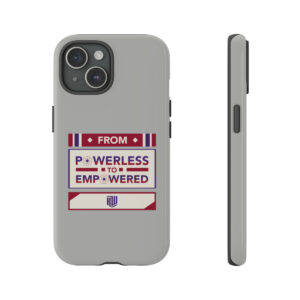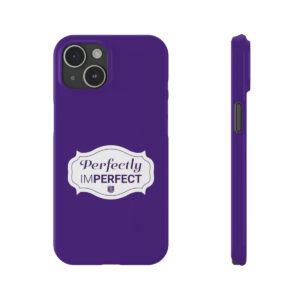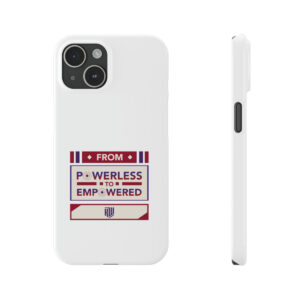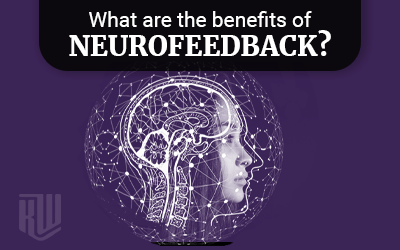Who should you seek out for neurofeedback training? There are four keys a person should be aware of when selecting a neurofeedback clinician.
- Licensed Clinicians
- Certified Clinicians
- QEEG
- Types of Neurofeedback
- Conclusion
In my last blog, I talked about why someone would consider training with Neurofeedback.
This article will talk about what one should look for in a competent neurofeedback clinician. If you do not have time to read this entire blog, feel free to skip to the end.
-
Licensed Clinician:
The first criteria I would consider is seeing a licensed clinician. This can be a licensed professional counselor like myself, a licensed social worker. A licensed psychologist, or a licensed medical professional registered nurse, nurse practitioner, physician’s assistant.
chiropractor, psychiatrist, a medical doctor (MD or DO), or a neurologist. Why?Each group will have training and experience in psychological and learning disorders.
Neurofeedback is not only a training program. There are times when individuals may need to process their experiences. Especially those with a trauma background or PTSD.
If you have a trauma history, I highly recommend seeing someone who specializes in complex PTSD. Some types of Neurofeedback can trigger painful memories as a part of the process.
Now Neurofeedback can be extremely helpful in giving trauma victims relief and healing, minimizing triggers. Still, it depends on the individual, their history, and where they are in their therapeutic process.
For example, I had a client with PTSD. He was a war veteran. After returning home, he became a police officer.
When he entered my office the first time, I quickly learned that he was very hyper-vigilant.
Initially, I could not acquire EEG from him because he reacted so strongly to the sound of footsteps in the lobby of Heart Matters outside of my neurofeedback office, even though the door was shut and locked.
So we talked. I heard many of his horrible war experiences. I also learned about some of the awful experiences he went through as a police officer.
He told me the primary impetus for his desire for treatment was his children. Several times his children came into his room while he was asleep.
He awoke with a start, ready for a fight. He was terrified he was going to hurt his children.
So we had him come after hours when no one else was in the office to acquire EEG. I could then do a QEEG assessment and set up a protocol for his neurofeedback training.
Once, while he was training, he began to flood with memories of atrocities he saw while in the war. We stopped the training, and I gently debriefed him until he re-attached to the present.
By the way, it was not the Neurofeedback that triggered these memories.
We switched to another stimulus, and he continued training with little problem. I did recognize that he needed some out of neurofeedback therapy.
So we had several sessions to help him process and de-escalate his trauma. He left our center a happy guy. Also no longer hyper-vigilant.
Intrusive Memories
He was no longer flooded or triggered with intrusive memories, and he felt safe in his skin. Can you see why it may be essential to have someone with my background for his treatment
One crucial characteristic is the type of person you want as your clinician. Are they learners? What I mean by that is do they continue to pursue new knowledge. I am not a researcher, but I am a learner, and from the very beginning of my career, I continued to find something better to help my clients. There is no way to master the brain, but I will try. I am the type of person that has to understand how things work and how they fit together.
So I have continued being mentored by the tops in this field. I continue to go to classes and seminars. I read studies and clinical information every day. Even listen to neuroscience podcasts while cycling. Why? I want results. We are constantly seeking to improve our neurofeedback practice at Heart Matters. I meet with my techs every week. We are doing neurofeedback training so we can heal, but also so we can learn directly from the process and have more empathy with our clients, and get better results.
-
Certifications:
In the neurofeedback field, there are two significant certifications. One is more basic, and the other is more advanced. The first one is called BCIA and is sponsored by the International Society of Neurofeedback Research (ISNR). BCIA certification requires, what I consider, a minimum of classwork and mentoring. The standards and education are more basic concepts. I chose not to get BCIA at the advice of two of my mentors and my educational background. However, this certification does guarantee that a provider does have some background and training in Neurofeedback.
The second, more advanced certification is sponsored by the International QEEG Certification Board (IQCB). This certification has months of classwork and mentoring. Certificants have to exhibit mastery and a comprehensive understanding of EEG and quantitative analysis. The board exam is extensive. Those who pass all the requirements are designated as a QEEG-Diplomate (QEEG-D). Everyone that has this designation is also a confirmed licensed professional. There is also a designation for non-licensed professionals called a QEEG-Technician (QEEG-T). Individuals with QEEG-T do the exact requirements but are not licensed. They may be pursuing a license or still getting their education. Regardless, they are well prepared and well-trained professionals.
I am now an executive member of the board. Part of my responsibilities is to review potential candidates’ backgrounds, coursework, exam, and mentoring. I approve of every candidate. I can say without question that these people are top-notch.
-
QEEG
QEEG stands for Quantitative Electroencephalogram. A clinician who uses QEEG is usually trained in brain phenotypes (locations and patterns for specific issues and symptoms) and brain networks and how they impact the clients’ symptoms. This is where the science is in training people with Neurofeedback.
Unfortunately, some companies are great at marketing and poor at training and understanding brain circuitry. Most of these approaches, like NeuroOptimal, have a one size fits all strategy. As a result, their clinicians often don’t understand the brain nor how brain circuity works to create negative symptoms. This approach is going to help some people, but not most. I personally would discourage people from this type of brain training, not because it is dangerous, but because it will probably be a waste of money and time. Instead, I would look for a practitioner who has certification in QEEG and uses QEEG as an assessment tool for training the brain. I have had numerous people come in after doing this kind of training. They were not helped, felt disappointed, and were even skeptical of all Neurofeedback due to their bad experience.
QEEG
QEEG is what allows Neurofeedback to be specialized and individualized for the client’s unique brain and unique symptoms. Without it, the clinician is only guessing what needs to happen in training. That is not the approach I want for myself or my clients. I like the protocols to be specifically tailored for my client’s needs. For example, I am often referred young clients who have a diagnosis of ADHD.
They are often diagnosed using a questionnaire that is based on symptoms. Sometimes they are diagnosed by a teacher because they struggle to stay focused in class or are disruptive. They are often sent to a doctor or psychiatrist and prescribed medication. In a QEEG, there are four patterns for ADHD. These patterns are called phenotypes. They are specific and indicate whether medication would be helpful or worsen the issue. If a child does not have this pattern, they mostly do not have ADHD. I often see children with an ADHD diagnosis that do not have ADHD.
They may have an anxiety issue. We treat that with Neurofeedback, and they become rock stars in their classes. I had an adult patient who was convinced they had ADHD, and they happened to be a physician. They were on Adderall, which speeds up the brain because it is essentially speed. When I looked at their EEG and QEEG. I noticed two things. This is not a characteristic of ADHD. The second thing I noticed was a sleep problem.
EEG
The patient fell asleep during every EEG we acquired, whether her eyes were closed or open. I presented her EEGs to Jay Gunkelman. Jay has been an international expert on evaluating raw EEG for 60 years. He also owned and ran a sleep clinic for 15 years. He has seen thousands of sleep-disordered EEGs over his career. Without hearing a word from me about my patient, he determined she had a pretty severe sleep disorder. Jay has also been a consultant to neurologists and psychiatrists for most of his career. He advises them on appropriate medication for specific disorders. After his determination, he asked me about the patient. He not only confirmed my findings but was concerned about the medication they were on. He said the medication might help them stay awake initially during the day but eventually, it would become harmful to my patient, and interfere with their sleep.
EEG
The biggest problem is that the general public does not know the difference. The companies that practice without QEEG are often highly trained in sales techniques. I wish they were trained in QEEG and brain science. They have been trained to handle objections to questions like, “Do you use a QEEG?” There reply, “Well, we could, but that would raise the costs of your brain training. Would you rather spend your money on something designed to make you feel like something is wrong with you, or would you want to spend your money on training your brain?” I actually heard this response with my own ears. The fact is they most likely have no idea how to do a QEEG, and their price for brain training may be more than those who perform a QEEG assessment.
Although there may be exceptions, stick with a clinician who uses QEEG to assess your brain.
-
Types of Neurofeedback:
There are multiple types of Neurofeedback that get excellent results.
-
Traditional Surface Neurofeedback:
There is traditional surface neurofeedback, which is where this industry began in the 60s and 70s. It is called surface because the emphasis is on the surface structures of the brain. The vast majority of neurofeedback practitioners do this type of Neurofeedback, and the good ones utilize QEEG. The particular focus of this type is to train brain rhythms. This place one or two electrodes on the patient’s scalp in specific locations and reward certain frequencies and inhibit others. They often use head maps to pick their locations but do not train using a normative database. This can be a very effective way to train the brain and has some benefits that other types of Neurofeedback do not have.
-
swLORETA Z-Score Neurofeedback:
I could do a blog on this alone. This is the type of training we mostly do at Heart Matters. The science is vast, and it is complex. The basic premise is location, location, location. In the 90s, technology advanced to the point that we could determine the sources of dysregulation down in the brain using EEG. That is a mouth full for sure. The basic principle is the surface sensors from a standard EEG cap can be used to triangulate locations down in the brain, much like your cell phone company can track your location by triangulating satellite signals in space. When these specific locations have issues, they disrupt the rhythms and the communication in the brain’s networks, and that causes symptoms like depression, anxiety, ADHD, and others.
This type of training is called whole head (or brain) training because we can train multiple locations at once. The net effect is we can train more conditions with more specificity faster. Our average patient’s training is about a third of the average Traditional Surface neurofeedback sessions. We also are effective with conditions that surface neurofeedback is not.
LORETA-Z
LORETA Z-Score training also compares and trains our patients based on a normative database. The concept of training to a norm makes sense to me scientifically. For example, when we go to a doctor, and he tells us that we have high cholesterol, and we ask him how he knows, he simply states something like, “When we did your blood work, your cholesterol levels were above the norm.” He then may show you your metrics comparing your blood work to the norm. We do this as well with our Neurofeedback by using QEEG to assess our patient’s brain followed by training with Z-scores. . I have trained hundreds of people and have never seen a negative side effect. On the contrary, I have seen positive side effects, like an anxious kid who also quit wetting the bed.
LORETA-Z
I have heard the same salespeople ask, “Why would you train someone towards a norm when they are already exceptional?” They propose that normalizing a brain might remove someone’s giftedness. First, I have never seen this happen, nor have my mentors. A gifted artist does not lose their talent when their brain has been trained to reduce anxiety or depression. As one of my mentors stated, “When you learned to ride a bike, did you forget how to walk?” I have seen gifted people become more focused in their gifted areas after doing Z-Score training. I believe in the science behind Z-Score training because it is safer and reduces the chances of adverse side effects.
Neurofeedback
So there are various forms of neurofeedback training. They all have their advantages and disadvantages. There are things traditional surface neurofeedback can do to help you that swLORETA Z-Score can’t. There are things that swLORETA Z-Score can help you with that traditional surface neurofeedback can’t. swLORETA Neurofeedback helps faster than traditional. On the surface of things, traditional seems cheaper, but it probably isn’t because more sessions are needed over the course of treatment. I believe that swLORETA requires more extensive training and knowledge of the brain’s circuitry, which is why I continue weekly mentoring with Dr. Lubar, who knows it all. He was one of the first to do traditional surface neurofeedback, is a consummate scholar and practioner, and he now does swLORETA. There are also consummate scholars on the traditional side, which is why I study with Jay Gunkelman biweekly.
-
Conclusion
In conclusion, I believe the critical thing in seeking out a neurofeedback practitioner is to find a well-trained licensed clinician who has certification at least with the BCIA, but preferably QEEG-D, who utilizes QEEG assessments. But I think having a qualified practitioner is the main starting point. You may not have the choice of a clinician, such as myself, in your area who does swLORETA. Stay away from practitioners that do not require certification and do not use QEEGs.
So what do you do when you don’t know? Feel free to send me an email. I probably won’t be able to treat you if you are not in Colorado Springs, but I can refer you to someone who is reputable in your area 9 times out of 10, or at least help you ask the right questions.
About The Author Mike Pinkston:
For nearly 40 years, Mike has been helping others heal from complex emotional, physical, and sexual trauma and abuse. He is also an expert in diagnosing and treating PTSD, Dissociative Disorders, as in multiple personalities, sex addiction, Love addiction, love avoidance, and Codependence.
He is also an expert in parenting and marriage, and family structures. In addition, Mike has advanced certification in EMDR and clinical hypnosis. Mike also specializes in Neurofeedback training, a cutting-edge treatment for many emotional and psychological difficulties that regular talk therapy and medication can not find solutions for. Things like ADHD, Bipolar, Anxiety, depression, PTSD, Addiction, and much more.
Finally, Mike has also spent over 25 years supervising and mentoring other clinicians.
If you are looking for more information about Neurofeedback or want to contact Mike for an appointment, he can be reached at:
719-257-3488
I am fortunate to have called Mike my counselor and now my friend and colleague. I am forever indebted for how he helped me save my life—so much of what I currently teach and continue to learn from Mike.




